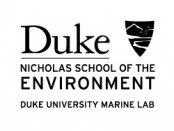Indonesia in the Coral Triangle region is one of the few locations where concentrated populations of whale sharks and manta rays reside according to Noun Project’s study of their habitats. These filter-feeders help control plankton abundance and regulate nutrient cycling, playing an important role in the marine ecosystem. Unfortunately for the giant mammals, Indonesian waters are alarmingly susceptible to plastic pollution from nearby coastal countries, many of which are ranked in the top 10 for plastic waste. Over time, plastic debris in the sea gets broken down into tiny pieces of plastics less than 5 mm. These so-called “microplastics” are commonly ingested by marine animals and contain pollutants at a concentration that is millions of times higher than the surrounding water. Whale sharks and manta rays are particularly prone to plastic ingestion, as they feed by filtering enormous amounts of water every hour.
In an attempt to determine the vulnerability of large filter feeders to microplastic ingestion, scientists assessed the waters of their typical Indonesian habitats such as those by Nusa Penida, Komodo National Park, and East Java. They studied the top 50 cm of the water column using a plankton net (called a “trawl survey”) and also recorded the visibility of plastic debris from the ocean’s surface. Using this information and the water filtration rates of the two species, they estimated the rate of plastic ingestion. Reef manta rays may ingest up to 63 pieces of plastic per hour when they feed in Nusa Penida and Komodo National Park while whale sharks could be ingesting 137 pieces per hour in Java, where they seasonally aggregate. Additional testing revealed that manta ray and whale shark excrement contained plastics, providing further evidence of microplastic ingestion and accumulation in the fish species. Ingestion of plastics can expose the long-lived animals to toxic chemicals, which can accumulate over decades and harm their regular growth, hormones, and reproductive functions.
Manta rays and whale sharks are both globally threatened species. Along with reproductive dangers from microplastics, both species face extreme pressures from overfishing. Manta rays have an average lifespan of 40 years while whale sharks have a lifespan of 100 to 150 years; however, because both fish species reproduce slowly and reach sexual maturity much later in life (15 years for manta rays and 30 years for whale sharks) they are being forced out of the ocean faster than they can reproduce. A national effort to reduce and manage plastic waste is essential for the conservation of these marine megafaunas.
One solution is to use less single-use plastic, such as plastic bags and food wrappers, which are the most abundant plastic sources of the region. The Indonesian island of Bali, known for its tourism, imposed a ban on single-use plastics in July 2019. The island generates more than 300,000 tons of plastic each year, with 11% ending up in waterways. While large shopping centers have ceased providing single-use plastics resulting in a significant reduction in the island’s plastic use, smaller businesses have failed to comply. Thus, imposing stricter penalties and extending this ban to the wider nation will be an effective solution.
Another solution is improving waste management techniques. In November 2019, Ecowatch launched a project to build 100 trash booms in Balinese rivers, a measure meant to eliminate 80% of marine plastic that comes from streams. While these booms are effective at catching debris, the removal of collected waste has proved to be more difficult. Due to the lack of waste facilities on less populated islands, most recyclables must be shipped to Java for processing. This decreases the financially lucrative aspect of trash clean-up. What’s more, due to highly irregular routes and general inexperience, large portions of Indonesia remain unserviced by waste workers. To combat this problem, the Gringogo Indonesia Foundation created an app that will allow civilians to scan garbage and determine its monetary value. Upon its introduction in Sanu Kajar, Bali, this app improved recycling rates by 35% and decreased ocean plastic deposits by 25%. Applying this app to dispose of plastic waste in trash booms has the potential to be an effective waste management solution.
News Article: https://marinemegafaunafoundation.org/blog/microplastics-manta-rays-whale-sharks/
Citations
“Microplastics on the Menu of Manta Rays and Whale Sharks.” Marine Megafauna Foundation, marinemegafaunafoundation.org/blog/microplastics-manta-rays-whale-sharks/.
Ecowatch. “100 Trash Barriers to Be Installed in Bali Rivers to Reduce Plastic Pollution.” Make a Change World, 25 November, 2019, https://www.ecowatch.com/bali-plastic-cleanup-barrier-2641452645.html
Elitza et al. “Microplastics on the Menu: Plastics Pollute Indonesian Manta Ray and Whale Shark Feeding Grounds”. Frontiers in Marine Science, 19 November 2019, https://www.frontiersin.org/articles/10.3389/fmars.2019.00679/full
Javerbaum, Molly. “To reduce plastic waste in Indonesia, one startup turns to AI.” The Keyword, July 9, 2019, https://blog.google/outreach-initiatives/google-org/reduce-plastic-waste-indonesia/
“Manta Ray Habitat Map by SEEtheWILD Wildlife Conservation Travel.” Manta Ray Habitat Map by SEEtheWILD Wildlife Conservation Travel, 11 Nov. 2017, seethewild.org/manta-ray-habitat-map/.
“Many Threats for Manta Rays.” Defenders of Wildlife, defenders.org/blog/2015/12/many-threats-manta-rays.
“Meet the Innovators Battling Plastic Waste in Indonesia: Mohamad Bijaksana Junerosano.” World Bank, www.worldbank.org/en/news/feature/2019/05/31/meet-the-innovators-battling-plastic-waste-in-indonesia-mohamad-bijaksana-junerosano.
“Not the Last Straw Yet: Bali’s Ban on Single-Use Plastics.” South China Morning Post, 12 Nov. 2019, www.scmp.com/lifestyle/travel-leisure/article/3036927/bali-ban-single-use-plastics-widely-ignored-small.
“View Current Whale Shark Map and Habitat Range.” View Current Whale Shark Map and Habitat Range, 10 July 2019, seethewild.org/whe-shark-map/.
Wamsley, Laurel. “A Massive Floating Boom Is Supposed To Clean Up The Pacific. Can It
Work?” NPR, 11 September, 2018, https://www.npr.org/2018/09/11/646724291/a-massive-floating-boom-is-supposed-to-clean-up-the-pacific-can-it-work
“Whale Sharks, Rhincodon Typus.” MarineBio Conservation Society, marinebio.org/species/whale-sharks/rhincodon-typus/.
“Whale Shark Information.” Shark Team One, www.sharkteamone.org/whale-shark-information.html.



8 responses to “Whale Sharks and Manta Rays: Impact of Plastic Pollution in Indonesian Waters”